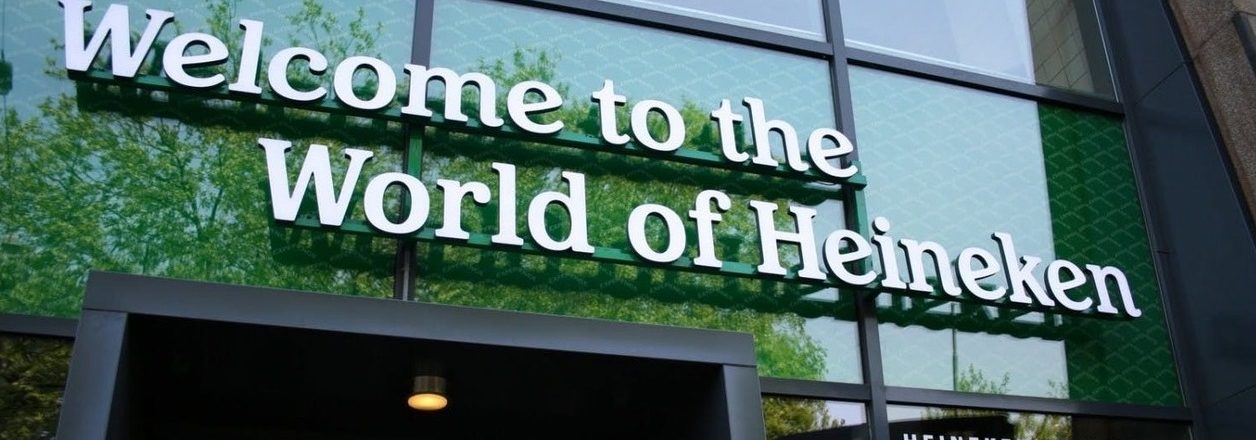
Heineken
Case history
Scenario
Heineken is the third largest brewer in the world, with about 165 million hectolitres of beer produced in more than 130 factories in 65 countries. It has 4 breweries in Italy and employs 2000 people, producing over 5 million hectolitres of beer per year for its various brands (Heineken, Birra Moretti, Dreher, Ichnusa).
In 2003, the brewing giant undertook a continuous improvement program on a world-wide scale, called the Heineken Total Productive Management (TPM) with the goal of drastically increasing the company’s operating performance.
Initially TPM only affected the breweries, but given the results achieved in terms of increased efficiency and waste reduction, the program was extended to the logistics and supply chain areas in 2010 with Heineken Italia involved from the outset, first as a pilot and now as the company’s operating leader.
The target: to greatly reduce stock levels nationwide in a way that could be sustained over time and to resolve the root causes that made this necessary.
Critical issues
“It all started with one question” says Alberto Cortese, at the time head of Customer Service & Logistics, now the supply chain director of Heineken Italia: “how can we reduce the company’s stock levels?”
The critical issues to be tackled were:
- Excessive stock levels in the warehouses
- Numerous external warehouses
- Poor optimisation of space and warehouse processes
- High logistics costs
While knowing that working with zero stock is impossible, we are aware at the same time that stock is actually a form of waste. Immediately after the first preliminary assessments, a thorough and detailed inventory analysis was launched to quickly identify and eliminate the causes and wastes behind this need for storage.
Project areas
The starting point was an in-depth analysis process on the “deployment of stock“: stocks were rigorously analysed in order to define the priorities to act upon and the improvement teams required. Subsequently, through a problem solving process, the root causes of these high stock levels were investigated.
For example, in one factory there was a management constraint that did not allow for reductions in the stock of packaging materials. This restriction was linked to certain individual supplier agreements. Having identified the problem and its root cause, the definitive solution was to renegotiate the agreement with the supplier to lower the minimum reorder amount of the materials in question.
Once this phase was completed, critical areas with a potentially high impact were defined and, with the use of an ease/impact matrix, 15 interfunctional improvement teams were selected. Each team formulated countermeasures and solutions.
For example, the team responsible for the reduction of stockpiles of raw materials and packaging materials employed solutions such as:
- Redefining emergency stock levels
- Improving material planning processes
- Introducing visual tools for managing stock and anomalies on a daily basis
- Creating alarm thresholds on operating performance
- Redefining quality control processes
- Creating standards and OPLs (One Point Lessons) used to train the operating people involved
The team for improving safety introduced the “overall risk reduction” methodology to minimise risks to safety in critical areas; while, the forklift productivity team worked on the causes of spikes in workload, thus reducing the number of forklifts required.

The program was also extended to logistics partnersincluding, for example, the outsourcers responsible for managing warehouse logistics who were integrated in the improvement teams and assisted in the renegotiation of minimum reorder quantities.
There were many mechanisms employed for actively engaging the people involved in such a way as to also ensure that these improvements were maintained after the project had finished:
- Training activities on improvement methods
- Defining priority KPIs for the warehouse, OPLs and new standards
- Introducing a new daily management habit; a combined activity of daily and weekly meetings, and the use of visual charts showing ongoing actions and performance trend indicators
Results
Through all of the in-depth analyses carried out, the team were able to see waste that had not been evident previously and to clearly identify the priorities to act on.
Initially, for example, everyone was convinced that the main reason that made the current stock levels indispensable was linked to production batches or deliveries being too high to allow for reductions in warehousing; however, in determining this root cause, the team realised that this factor accounted for only a small percentage of total stock value. Of more importance, however, was the unoptimised planning process and its operating parameters.
From being the project pilot, Heineken Italia has become the company’s operating leader. This is thanks to the many achievements, including the following highlights:
- Reduction of total stocks in the first year: – 25%
- Reduction in stocks of finished product in the first year: – 33%
The results achieved in the first year were reinforced and increased in the following two years.
“This structured approach has led to an alignment of various business functions. The work done by the teams has allowed not only the reduction of stocks in the short term, but moreover to these results being sustained over time thanks to a kind of new organisational learning. (…) There has been a clear alignment between business priorities and teamwork: this has eased communication and empowerment among our people, allowing them to clearly understand their own contribution to achieving strategic goals”
(Alberto Cortese, Supply Chain Director for Heineken Italia)

The fundamental focus of this whole journey was people: involvement in the improvement process has been widespread and involved a large number of people working in interfunctional teams solving problems in order to reach a common goal.
Learning to go into the field and monitor, through data and observation (genchi genbutsu) was a very important discovery as it was important to rigorously apply problem-solving steps and methodologies.
Seeing the supply chain as a process and no longer as a function allowed us to extend the improvements to more and more people, including our customers. Concepts such as “waste”, “loss”, “deployment”, “eradicating root causes”, “5 Why”, “kaizen” to name just a few, are increasingly becoming common language in the organisation and its network of partners.
Over time, the continuous improvement program has become more and more a a true business philosophy, going well beyond the scope of production from which it was launched.
This is just one instance of applying Lean methodologies and the principles of continuous improvement, taken from the bestseller “Toyota Way. The 14 principles for the rebirth of the Italian industrial system” (By J. Liker and L. Attolico, Hoepli 2014) that has allowed Heineken to reduce stock levels, to revise agreements and Service Level Agreements with suppliers and to set up key performance alert thresholds to keep processes under control.



